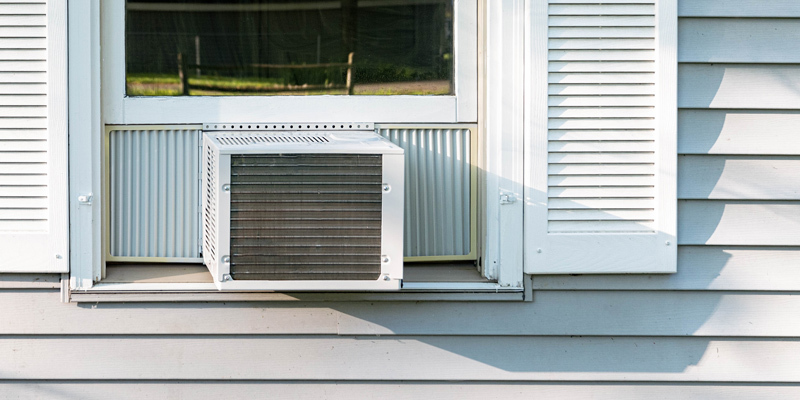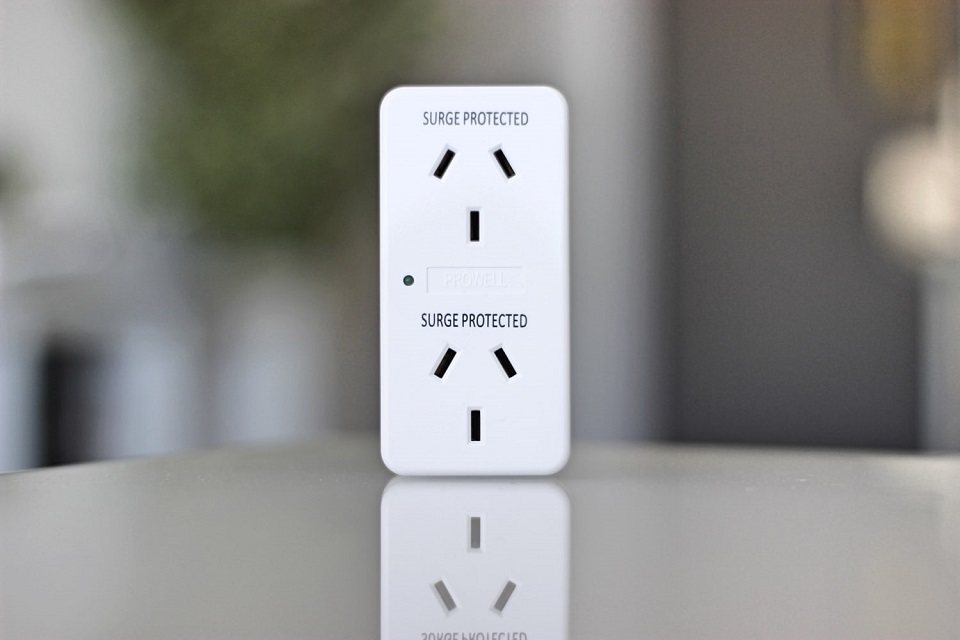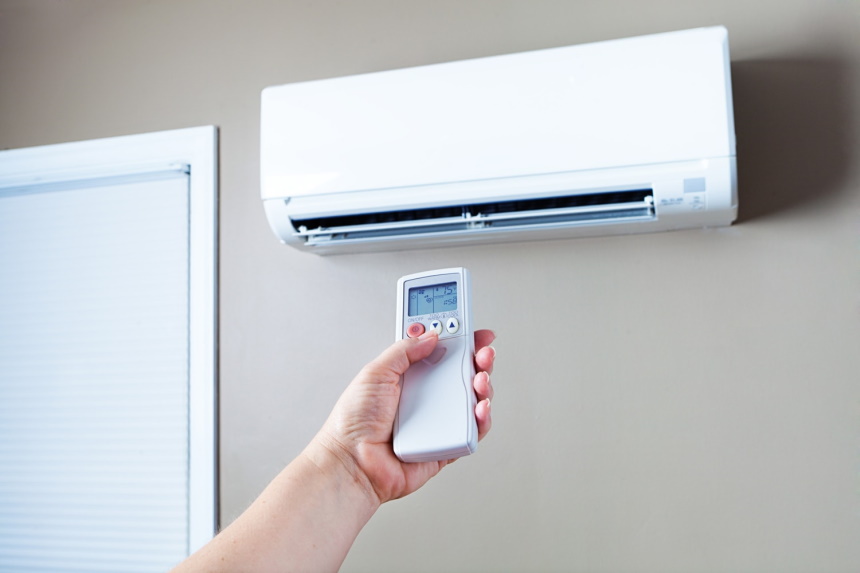

Figuring out how to cool a room with no windows is quite a big puzzle. After all, the windows are usually responsible for venting out warm air and bringing in cooler air. The lack of windows is therefore definitely a problem. Nevertheless, it’s a problem you can work around with a few good hacks.
If you can’t stand the temperatures in that windowless room, you can find out why they are so high and how to solve the issue in the sections below.
This section focuses on why you may be feeling the heat in the windowless room.
The most probable culprit is the lack of ventilation. Unlike a room with multiple windows, a windowless room has fewer entry and exit points for air. As such, even if heat builds up in the room, there are no opportunities for the hot air to leave the room and be replaced with fresher air. Consequently, the heat will keep building up until you have no option but to leave the room and look for solutions.
Humidity may be another reason why there’s unbearable heat in that windowless room. However, this is only when the relative humidity is high, and the water vapor is at capacity or near capacity. This simply means that the air cannot hold any more water vapor.
On the other hand, our bodies cool down when we sweat, and that sweat is evaporated into the air. If the relative humidity is 100% or close to that, your sweat can’t evaporate. Consequently, your body can’t cool down, and you will feel the heat until you find an alternative solution.
Most air conditioners also reduce the humidity levels in your house to ensure more effective temperature regulation.
If the temperature outside is high – you might not even know when it would hit you. If the house wall is ‘baked’ under the midday sun – your windowless room will get the heat inside with no chance of letting it out. It will get hotter during the night for the same reason.
You may also have incorporated radiant heating systems in the room’s walls, floor, or ceiling. These will, of course, raise the overall room temperature to unbearable levels due to the lack of ventilation. However, in this case, one of the solutions for how to cool off such a room with no windows is fairly simple: just shut down the radiant heating system.
Another solution is to install cooling devices that thrive in such conditions. Some examples of the same are listed below.
Ductless AC units are an effective way of cooling a windowless room. In fact, there isn’t much difference between how they work and how central air conditioners work. However, instead of distributing the cooler air through a system of ducts that connect to the whole house, ductless AC units directly dump the cool air into the room.
These units will typically come in two pieces, and you can only install them on an exterior wall. One of these components is an exterior conductor, while the other is installed on the inside of the wall. There also needs to be a connecting pipe that goes through a hole in the wall.
Tower fans tend to come with a tall narrow build instead of the circular look of most other fans. While the base is stable, the rest of the fan rotates so it can blow air to almost all corners of the room. Also, they don’t actually cool the room’s temperature. Instead, they create a wind chill and ensure warm air doesn’t stay around you for too long. As such, you will feel as if the room is much cooler than it is.
As for the ceiling fans, they basically work the same way as tower fans. They keep the air in constant motion and create a wind chill that will leave you feeling cooler. If your windowless room is fairly compact and you need to find the best ceiling fans for small rooms, we’ve linked to a list of options. The information provided should also tell you what parameters to look for when comparing and purchasing such devices.
Another method for how to cool off a room with no windows is to use evaporative coolers. According to Energy Saver Trusted Source Evaporative Coolers | Department of Energy In warm climates with low humidity, evaporative coolers can be a cost-effective cooling strategy. www.energy.gov , these devices provide a natural and energy-efficient cooling method not just for windowless rooms but also for other rooms in the house.
Also, these devices pass the hot air in the room over pads with water or ice. The heat in the air is expended while evaporating the water, leaving only cool air and water vapor behind. After that, the machine can push the now cool air back into the windowless room.
Reviews by people who have solved similar issues by using an evaporative cooler indicate that the Hessaire MC37M is reliable for the job. It’s compact, easy-to-use, and can cool a 950 square feet room or smaller quite efficiently.
Through-the-wall AC units are slightly different from window ACs in that they need to be installed in a hole on the room’s exterior wall. Everything else about the cooling process is similar to other AC units where the air is sucked in, pushed through cooling coils with refrigerant that absorb the heat before the air is redistributed in the room. Furthermore, the absorbed heat is released outside the house.
Those of you who need to find the best through-the-wall air conditioners and are confused by the parameters that would make a device great for the job can look through the provided link for tips.
Portable AC units are another possible solution. They’re not different from through-the-wall and window AC units in how they function. Nevertheless, unlike these two alternatives, portable ACs don’t need permanent installation.
They come with ducts that you can run through doors, windows, walls, ceilings, or more. As such, you can drill a hole in the wall or vent the device through the door into a room with windows and better air conditioning. That said, if you’re going to drill a hole in the wall, there may be other solutions more suited to that.
Also, according to reviews, the Whynter ARC-14S is one of the most suitable and reliable portable AC units for cooling a windowless room. It has three modes, i.e., air conditioner, fan, or dehumidifier, that work based on the conditions in the windows room. Furthermore, it’s effective at cooling 500 square foot windowless rooms or smaller.
You can also learn how to cool a small room with no windows without purchasing any expensive equipment. Here are a few tips.
If it’s the bedroom, you don’t even need to cool the entire room before popping in to sleep. Just pick your sheets, fold them, and put them in a resealable bag. Think ziplock bags but bigger. Once done, put the bag in the freezer, wait a few minutes, take them out, and spread them on your bed. Consequently, your bed and the room will feel as cool as a cucumber at the beginning of the night.
Conversely, if the windowless room is near the kitchen, the ripple effect is that the more you cook, the hotter the room will be. This is because cooking requires heat, and once the hot air has moved into the room, it will have nowhere to go due to the lack of ventilation. As such, if you reduce your cooking, you reduce the heat that ends up in the windowless room.
You can also use bathroom exhaust fans, with the prerequisite being that the room next to the windowless room has cooler temperatures. As such, when the exhaust fan pulls the hot air from the windowless room, it will immediately be replaced by cooler air from the adjacent room.
For those who need to find top-tier bathroom exhaust fans, this link should tell you what to look for as markers of quality.
Next, if you know the hot air doesn’t actually originate from the windowless room, you can close the door to keep it from coming in. One example is when the windowless room is next to the kitchen.
The heat in the room is likely bothering you because you can feel it, and therefore, your thermal comfort is low. However, if you regulate your internal temperatures, then the heat in the room may not be quite as bothersome. You can use several approaches for this, e.g., showering with cold water, taking a cold beverage, wearing light and breathable clothing e.t.c.
Have you ever noticed the back of your phone tends to feel warmer after extended periods of use? This is true for all electronic appliances. They heat up during use, and this could be the reason why the room is so hot. Consequently, using fewer appliances or shutting them down altogether will result in a cooler room.
If you already have a set of two fans, there’s a way to set them up to maximize the cooling effect on the room. One has to be set up facing the ceiling while the other should face the open door.
According to Sciencing Trusted Source The Scientist Henry Hess Invented What Kind of Devices? | Sciencing Henry (also known as Harry) Hess was a geologist born in 1906. He worked as a professor at Princeton, was in the Naval Reserve during World War II and helped develop the U.S. Space Program. While Henry Hess did not invent any devices, he is known for coming up with the Theory of Plate Tectonics. sciencing.com , hot air tends to rise since it’s less dense than cooler air. The fan pointed towards the ceiling will force the hot air to be more evenly distributed in the room. On the other hand, the fan facing the doorway will force the hot air out of the room, replacing it with cooler air.
Windowless rooms also have less light, so we understand the need to leave your lights on. However, like other electric appliances, these lights generate heat as they work. That said, LEDs and compact fluorescent lamps generate less heat. Consequently, if you’re using incandescent lights, you should replace them with these two alternatives.
If you have a room on the sunny side, your best decision would be to cover it from the direct light with plants, trees, and practically anything that deflects the rays. You would be surprised how the temperature in the room would change for the better.
This write-up shows that figuring out how to cool a room with no windows is not difficult. There are multiple solutions, some of which are inexpensive or require no additional investments on your part. Our advice is to use a combination of these solutions until you achieve the ideal temperature for your windowless room.





